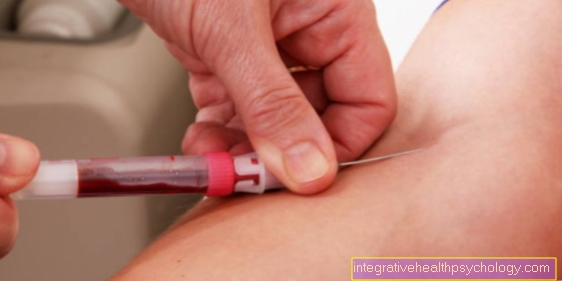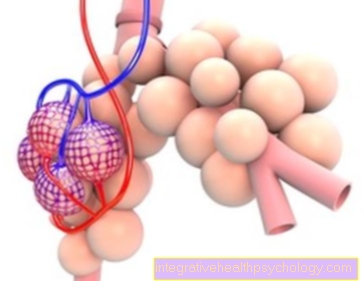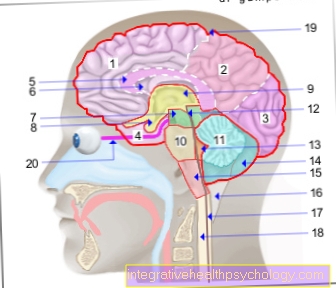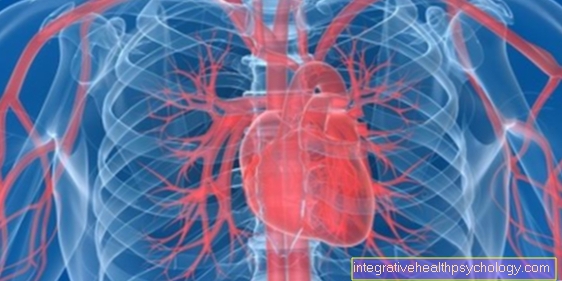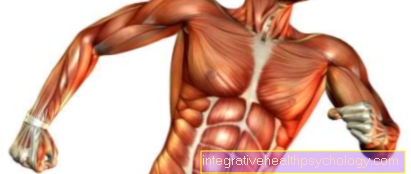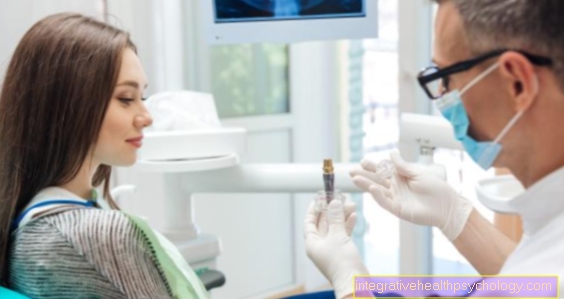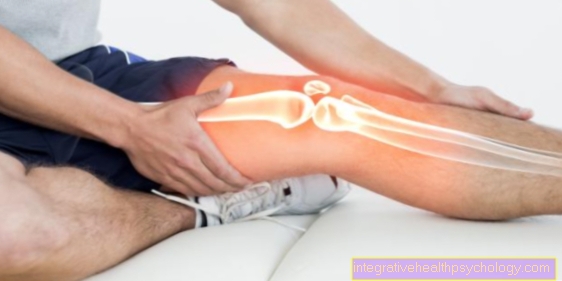Osteochondroma
All information given here is only of a general nature, tumor therapy always belongs in the hands of an experienced oncologist!
Synonyms
cartilaginous exostosis, overleg, exostosis, solitary exostosis, solitary osteochondroma, ecchondroma, hereditary multiple exostoses (HME), multiple osteocartilaginous exostoses, osteochondromatosis.
English: osteochondroma
definition
The osteochondroma is the most common benign bone tumor. In most cases it starts from the growth plate and forms bulbous bone outgrowths made of hard bone material (cortex), which is covered by a cap with hyaline cartilage.
frequency
The osteochondroma is the most common bone tumor in childhood. In most cases it develops between the ages of 10 and 20.
It is evenly distributed across both sexes. In rare cases there is a familial form that has to be considered separately.
localization

- Most frequent localization:
- Thigh and lower leg close to the knee, upper arm close to the elbow
- The tumor arises at the end of the long tubular bones.
- At these points there seems to be a defective growth in the growth plate with a lateral outgrowth of parts of the growth zone. Therefore, the benign tumor is covered with a cartilage cap.
- In the course of growth, the osteochondroma moves away from the growth plate (see picture above).
- Less common locations:
- spoke close to the wrist
- tibia near the ankle
- Fibula near the knee and ankle
- Hand and Tarsus
- Flat bones (shoulder blade, iliac bone, rib, skull, Sternum).
metastasis
Osteochondromas are benign and therefore do not metastasize.
The bone arises from the knob of the cartilaginous cap.
In 0.25%, an osteochondroma can become malignant, both solitary and multiple osteochondromas.
Symptoms

Pain:
- Since it is a benign tumor, there are no symptoms in most cases.
- Bone growth can irritate nerves, which can cause pain. In these cases, surgical removal of the osteochondroma can be considered.
- can also be caused by an inflamed bursa (= bursitis).
- through a malignant (malignant) degeneration.
Diagnosis

1. Imaging diagnostics:
- Skeletal x-ray
- CT
- MRI
- Bone scintigraphy:
increased uptake of technecium (= a weakly radiating material)
cannot differentiate between benign and malignant tumors.
therapy
In most cases, osteochondroma does not require therapy. Should be Osteochondroma However, if there are discomforts, surgical removal of the tumor may be necessary.
Surgical therapy should be considered, especially if the growth puts pressure on a nerve, or if the growth accelerates or the functions of the bone are restricted.
Most osteochondromas can be easily identified by radiological controls (X-ray image) to be watched.
Other forms of bone tumors
There are different forms of bone cancer.
You can find further information on the following bone tumors:
- Osteoid osteoma
- Osteosarcoma
- Chondrosarcoma
- Ewing sarcoma
- Enchondroma
- Rhabdomyosarcoma
General information on the subject of tumors can be found at:
- Bone cancer
- Bone tumor
- tumor
All topics that have been published on the field of internal medicine can be found at:
- Internal medicine A-Z



